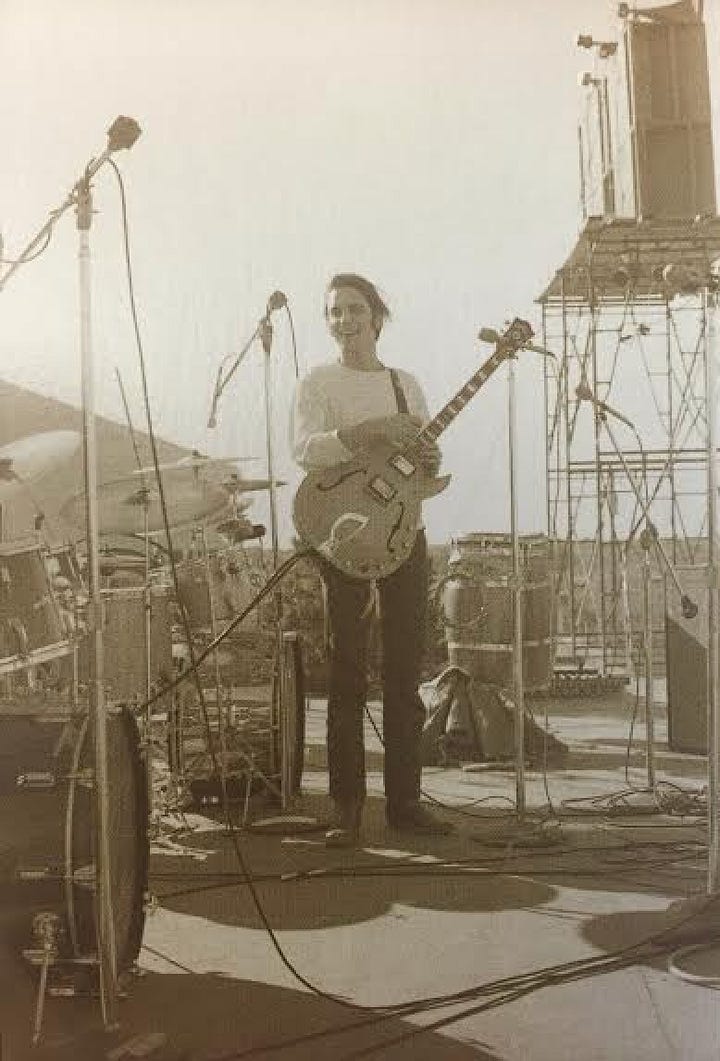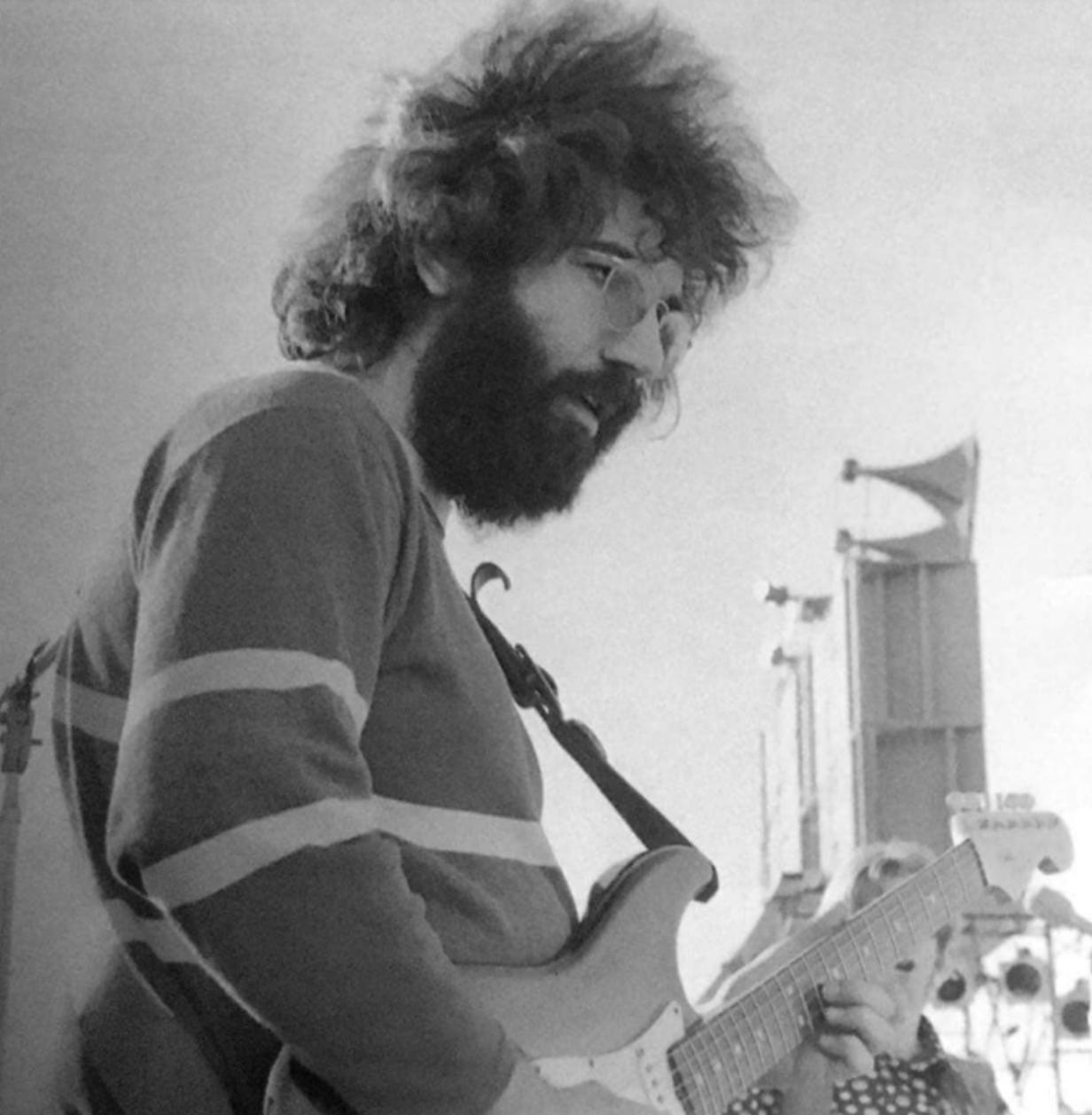Grateful Dead—Civic Auditorium, Honolulu, HI, January 23-24, 1970
w/The Sun & The Moon, September Morn, Pilfridge Sump, and Michael J. Brody
In late January of 1970, the Grateful Dead, 5,000 pounds of excess baggage consisting of instruments and their own sound system, and a colorful contingent including Augustus Owsley Stanley III, touched down on the Hawaiian island of Oahu. The Dead were there to perform two shows along with a few local bands and a musician who had never played a concert before—newly minted RCA artist and heir to the Jelke oleomargarine fortune, Michael J. Brody, who was supposedly giving away his $25 million inheritance because he wanted "Peace in the world." In an interview with John Bilby, of the Honolulu Advertiser, Garcia quipped "We don't even know the cat. We're just like everyone else, we've heard the Brody rave. There's even a rumor he's going to be putting out a Charley Manson album."
The Dead were so intent to gig in Hawaii that they did so for a mere $6000 bucks a night. I’ve read a few places that they even paid for their own airline tickets, which is impressive because they had so little money at the time. As was their custom, they brought their sound man along to document the affair, and the resulting sound quality is superb, with the Bear dialing the system into just the right amount of shrieking feedback and beyond. The Dead would return again in June for two more shows at the Honolulu Civic, this time with the New Riders of the Purple Sage, Quicksilver Messenger Service, and the Steve Miller Band sharing the bill. Interestingly enough, after the four 1970 performances they would never play on Hawaiian soil again.
Historically this is a watershed period; the structure and style of the music is shifting, and the band now enters the very brief half-year where the primal psychedelic repertoire lives side-by-side with the new Americana. These are also the final days of the 7-man ensemble, as the Dead will fire keyboardist Tom Constanten on their Hawaiian junket. According to Constanten in his excellent book Between Rock and Hard Places: A Musical Autobiodyssey (Kalapuya Books, 1992), it wasn't really a "firing." TC and the band were becoming somewhat unhappy with each other for various reasons—he felt they didn't give him much input or a role in the music, and they felt he didn't play rock music very well. "The limited input I had with the Dead wasn't getting me off, and it wasn't getting them off either."
Of the two January dates, it is the first night’s tape that’s always reeled me in. From the opening jammed out China Cat Sunflower > I Know You Rider, you can feel the boys are onto something. Black Peter is delivered next and it’s a real gem—full of pathos and beautifully rendered. Toward the end of the recently penned Robert Hunter tune, Jerry has to fix a broken string, “On account of he broke it,” according to Bobby before he takes the opportunity to tell his Yellow Dog Story. Guitars restrung, they go with Hard to Handle. It’s a tight version teeming with McKernan mojo and an absolutely searing Garcia solo—a damn nice comebacker to Weir’s unrestrained and overused comedic respite. A Merle Haggard song is served up next in the form of a punchy Mama Tried. Garcia takes a moment to respond to an unheard heckler while the band tunes up: “This is 1970 Jack, not ’56! Get with it!” Pig, in consummate prankster form, sings the chorus of Searchin’ over the Dire Wolf intro. The second Workingman’s song of the first frame is solidly played and a good choice to close out the early set.
The back half of the show begins with a standard-issue Good Lovin,’ infused with great harmonies. The pre-drum section is a bit tentative, but when the band returns it gets much more compelling. From here, the septet shifts into deep jam mode, beginning with an incendiary That’s It For The Other One. The Other One middle jam is ferocious with a long build up before dropping into the final suite portion. Dark Star rises out of the Cryptical reprise; the intro is short and mellow, with Hart scratching along on guiro. Constanten, in his last Dark Star with the band, is very low in the mix, basically just adding some background texture. They stick close to the Dark Star theme until Garcia sings the first verse, a little more than four minutes in. Weir and Lesh then push the band into deep space. A long, quiet stretch ensues, gradually infused with Hart’s gong washes, long howls of feedback, and then more silence.
In time, the familiar Sputnik arpeggio quietly emerges, serving as a transitional pattern before the volume swells and the music flows into a regular jam. The new motif begins loosely with Kreutzmann’s drums, crescending backing organ chords, and Garcia merrily messing with the melodic structure. Mickey’s claves kick in and the music becomes more spirited with the jam intensifying on a repeated droning low note from Jerry, before fully taking flight into a well-placed Bright Star passage. The joyful uplifting counterpoint works well as another transition, this time to return the group to the main theme.
And, as was the practice Dark Star segues into St. Stephen, with elegant power chords, an excellent jam, and a drove of Phil and Jerry fills. There’s no William Tell bridge tonight and, instead of landing on The Eleven, they dive headlong into 36 ½ minutes of Turn on Your Lovelight. It’s a fiery version, confidently played, and the perfect way to close this one out.
All for 3 buckeroos in advance, $4 at the door. Aloha.


And while I’m at it, here’s Bear’s soundboard fragment from the following night. Only the beginning and end of the show survive, but we do get a charged Cumberland Blues opener, another sublime Black Peter, and a short, but well-jammed Dancing in the Street encore. Listen up.






Wow, I love this historical flash back.. being a dead head, I can hear and see your story.. love the pics too.. best picture of Jerry ever.. he looks healthy and happy…. Side note here, I did the cabinetry in Mickey’s recording studio, and my brother built it... very fun job
My first shows were the Swing Auditorium in Berdoo a month before the Hawaii shows, I was only 5 so I was mostly back stage in kiddie jail, but I really liked the time pigpen came & played kids songs on the harmonica for us kids…